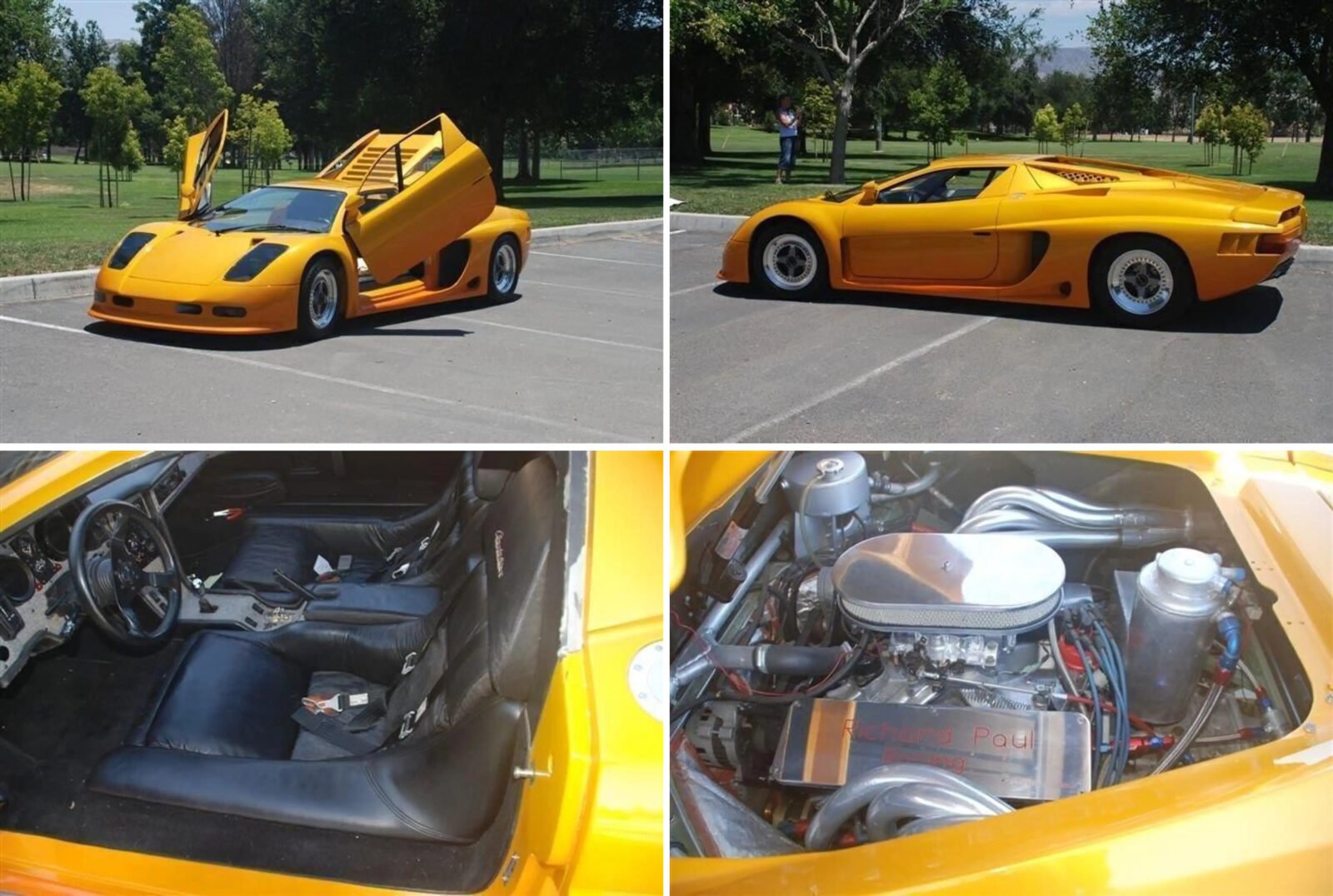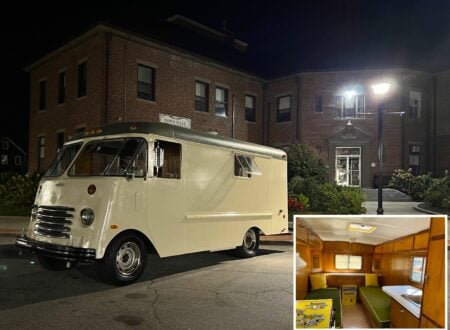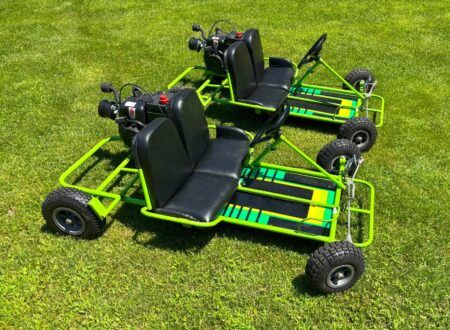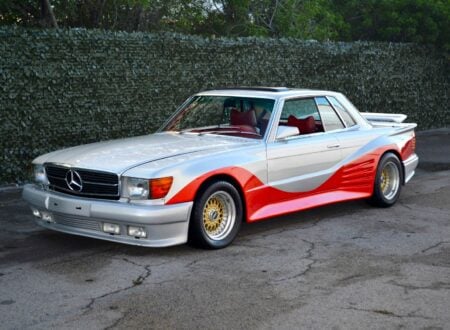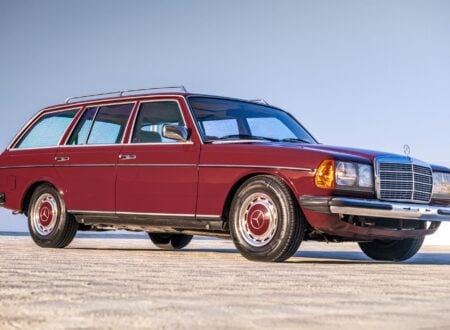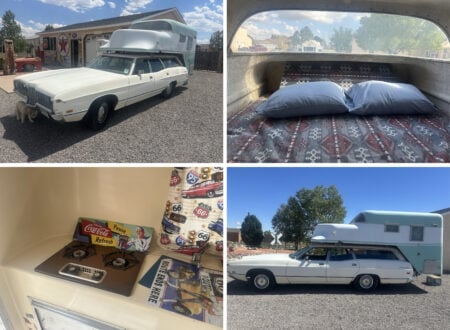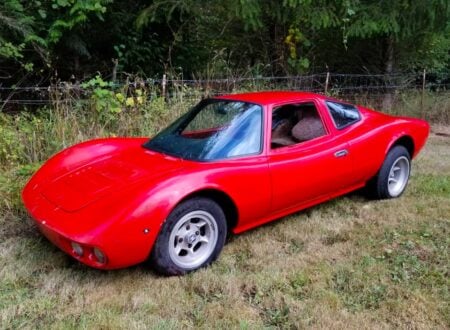This is the Searcher 1, it’s a one-off supercar that was developed and built for NBA basketball legend Wilt Chamberlain in 1986 – it was tailor made to fit Chamberlain’s 7’1″ height.
The car is powered by a 467 bhp supercharged V8 and it’s geared for a theoretical top speed of over 200 mph. Impressively, it was both more powerful and lighter than almost any other production supercar in the mid-1980s.
Fast Facts: The Searcher 1 Supercar
- Wilt Chamberlain’s Searcher 1 was a one-off supercar completed in 1986 after two years of development. Designed specifically to accommodate his 7’1″ frame, it united British race-car engineering with an American supercharged V8. Chamberlain wanted a street-legal machine built to Le Mans standards, combining aerospace construction, high power output, and a custom-fit cockpit.
- Lyncar Engineering of England fabricated the semi-monocoque chassis using riveted aluminum over a tubular steel frame, producing a rigid 3,000 lb structure. Peter Bohanna shaped the fiberglass body, refined it in a wind tunnel, and designed removable rear panels for access. Suspension included coil-overs up front and double wishbones at the rear, with AP Racing brakes and center-lock wheels.
- Power came from a 6.0 liter GM small-block V8 assembled by California builder Richard Paul, equipped with forged internals, Brodix aluminum heads, and a custom axial-flow supercharger. It produced 467 bhp at 6,750 rpm, routed through a ZF 5-speed transaxle originally designed for the BMW M1. The gearing provided a theoretical 200 mph top speed – well beyond most 1980s supercars.
- After final assembly in California, Chamberlain drove the Searcher 1 only briefly before storing it. Following his death, his family donated the car, complete with drawings and build records, to the Naismith Memorial Basketball Hall of Fame.
History Speedrun: Wilt Chamberlain’s Searcher 1
By the mid-1980s, Wilt Chamberlain had long since retired from basketball, but his love for speed and fast cars hadn’t waned. Standing 7’1″ tall, he’d never been able to fit comfortably in a production supercar. So, in 1984, he commissioned a purpose-built supercar that was fast enough to rival the Le Mans machinery of the time, but tailored to fit his own frame. The finished car, delivered in 1986, was called the Searcher 1.
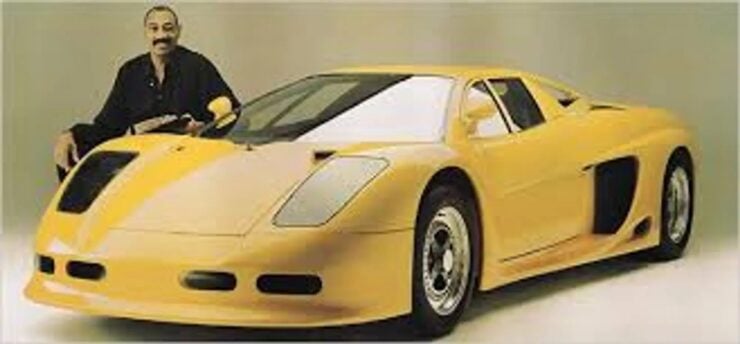

The Searcher 1 project brought together three key players including Lyncar Engineering of England, well-known for its Le Mans and Formula One work who handled the chassis and fabrication. The styling and overall concept came from Peter Bohanna, a designer and engineer who had previously worked with Lola and Ford Advanced Vehicles before co-creating the Bohanna-Stables Diablo, later sold as the AC 3000ME.
Finally, the powertrain was built by California engine specialist Richard Paul. Chamberlain provided the direction – the car needed uncompromising performance, aerospace quality engineering, and enough cabin space to comfortably fit his legendary height.
According to the original build sheets, the Searcher 1’s chassis was built in England by Lyncar using methods derived directly from lessons learned in endurance-racing at the 24 Hours of Le Mans. It used a semi-monocoque structure made of aircraft-grade aluminum sheets that were formed, fabricated, and permanently riveted to a tubular steel framework.
This hybrid chassis design produced a light yet exceptionally rigid frame – far stiffer than a conventional space frame, and it had an integrated roll bar in the cockpit for added safety. Front and rear suspension assemblies were attached to subframes at each end of the tub, a relatively common feature for high end race cars and supercars of the time.
The car’s total mass came in at around 3,000 lbs (1,360 kgs), surprisingly lightweight given the car’s size. Both ends used fully independent suspension systems with Koni aluminum coil-over dampers, adjustable for compression and rebound.
The front employed a rocker-arm design with inboard springs and an adjustable sway bar, while the rear used a double-wishbone layout. AP Racing four-piston aluminum calipers and vented iron rotors provided substantial stopping power, and the car rode on center-lock Lola-type wheels.
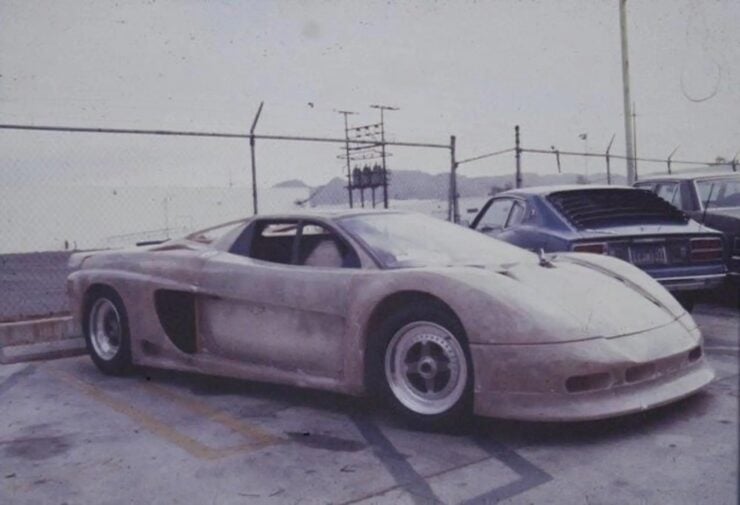

Bohanna shaped the body in wood before refining it in a wind tunnel, the final shell was hand-laid fiberglass reinforced with aluminum inserts at key structural points. The rear section could be removed in one piece for maintenance and engine access, just like the Le Mans prototypes of the time.
Wind-tunnel testing and extensive hand finishing gave the car its smooth lines and wide-radius curves – stylistically the car was ahead of almost anything else on the road in the 1980s, and looked more like the supercar designs we would begin to see coming out a decade later in the 1990s.
The Searcher 1 was powered by a 6.0 liter General Motors marine-spec small block V8 built by Richard Paul’s shop in California. This engine used a 4.030 inch bore and 3.5 inch stroke, a 4130 steel crankshaft, forged TRW JE pistons, Brodix aluminum heads (prepared by Airflow Research), and an Iskenderian roller cam with a billet-steel valvetrain.
Topping this engine off was a custom axial-flow supercharger, unique to this specific car, feeding air through a polished Edelbrock Scorpion intake and a Holley four-barrel carburetor. Dyno sheets list output at 467 bhp at 6,750 rpm, though the chassis was designed to accommodate up to 700 bhp.
To put this into perspective, major supercars of the time like the Porsche 959, Ferrari Testarossa, and Lamborghini Countach all made less power than the Searcher 1, and they all weighed more.
Power was sent back through a ZF 5-speed transaxle originally designed for the BMW M1, with interchangeable ratios and gearing tall enough for a theoretical 200 mph at 7,500 rpm. A triple-plate aluminum clutch and 10.5 inch flywheel completed the driveline.
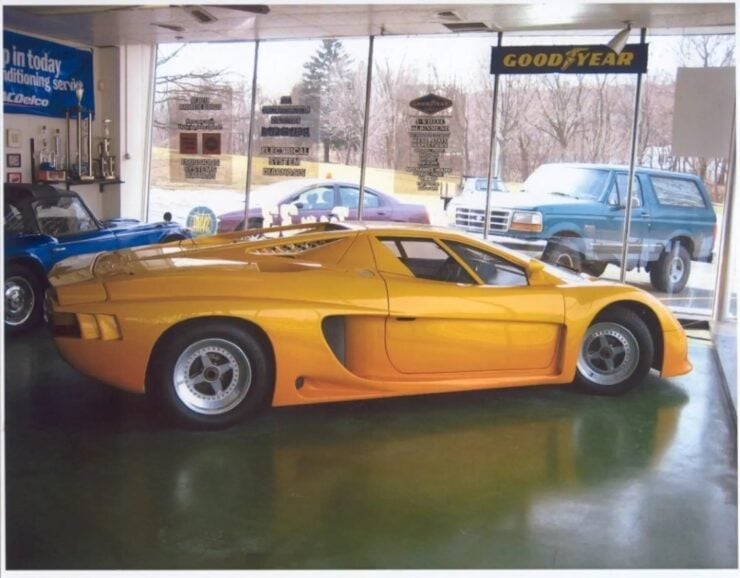

Mike the Pipe of England built the tuned exhaust, while dual side-mounted aluminum radiators with thermostatic fans and driver override handled cooling. Every major electrical load was relay-controlled, and the loom used aircraft-grade wire, soldered and shrink-wrapped. Diode-light fuse alerts and audible alarms signaled any failure.
The interior panels were formed from aluminum, trimmed in hand-stitched Italian glove leather, the seats were fitted with race-style four-point harnesses, and a Momo steering wheel sat on an adjustable GM tilt column with a key lock. Chamberlain’s height required a six-inch stretch to the cabin and modified pedal and steering placement.
Instrumentation combined aircraft-spec gauges with digital speedometer and tachometer readouts. A Sanyo air-conditioning compressor, CNC-mounted to the block, provided cabin cooling via ducts separated by foam-filled bulkheads. An onboard Halon fire-suppression system, driver-activated, was piped throughout the chassis.
Once Lyncar completed the chassis and body in England, the car was shipped to California for final assembly under Richard Paul’s supervision. There, the powertrain and all ancillary systems were installed, tested, and tuned. Though the car was capable of extreme performance, Chamberlain reportedly drove it relatively sparingly – just a few trips to the track and roughly 100 miles of total use.
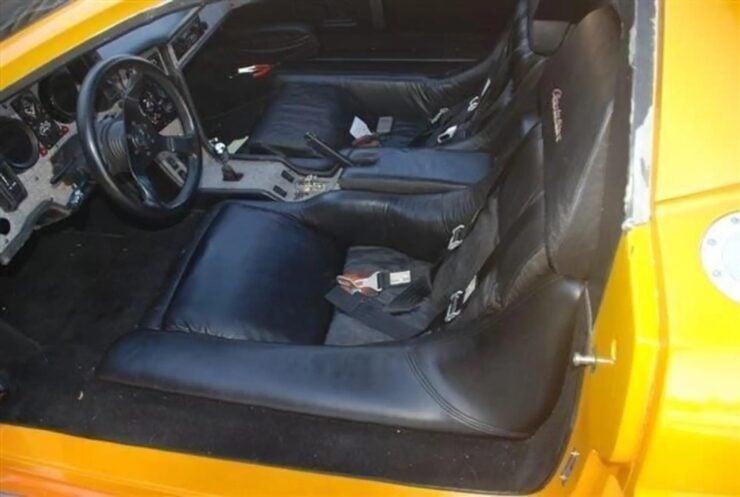

After his death, Chamberlain’s Searcher 1 was donated by his estate to the Naismith Memorial Basketball Hall of Fame, accompanied by full documentation and technical drawings. The Hall publicly thanked Chamberlain’s sister, Barbara Chamberlain Lewis, for her help in preserving the vehicle and photographs.
The car is now due to roll across the auction block with Julien’s in early November, the estimate is $300,000 to $500,000 USD, and you can visit the listing here if you’d like to read more or register to bid.
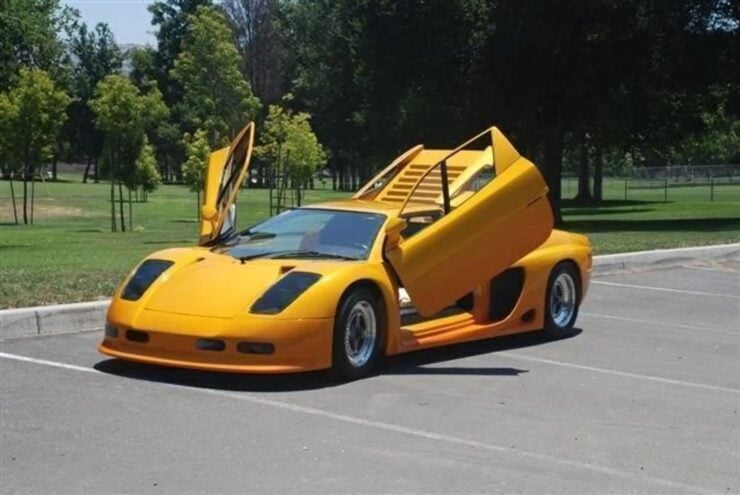
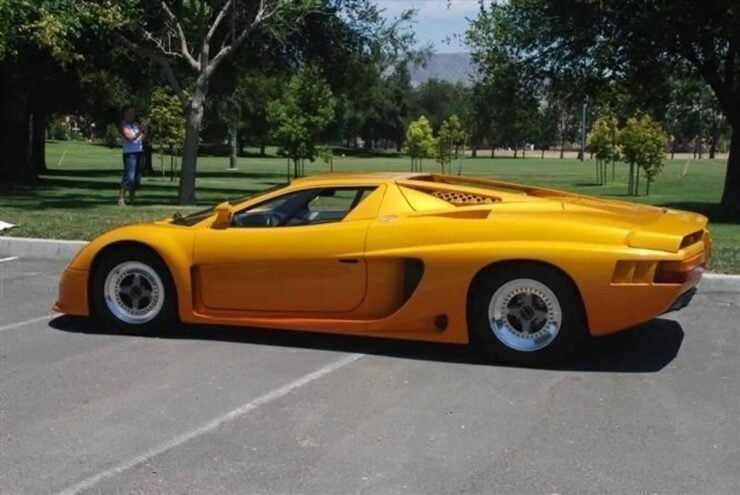
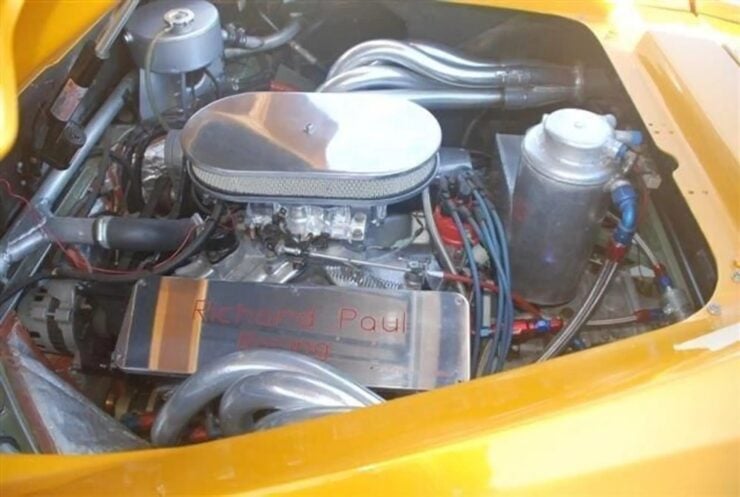
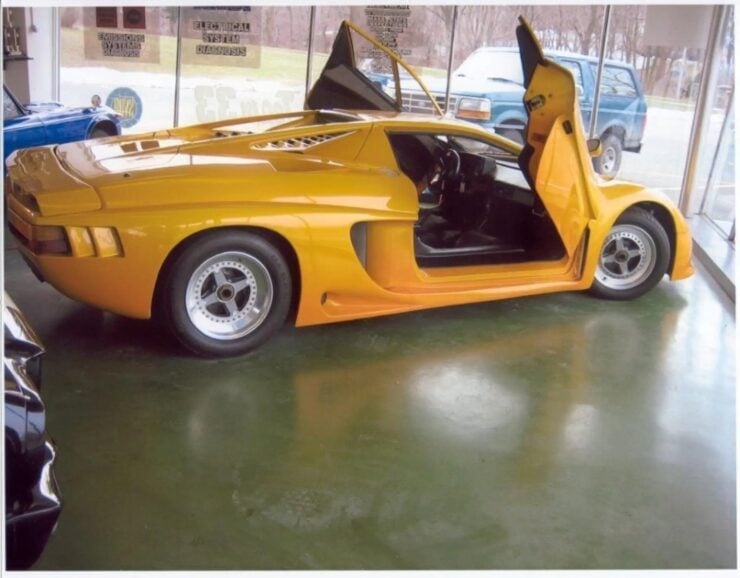
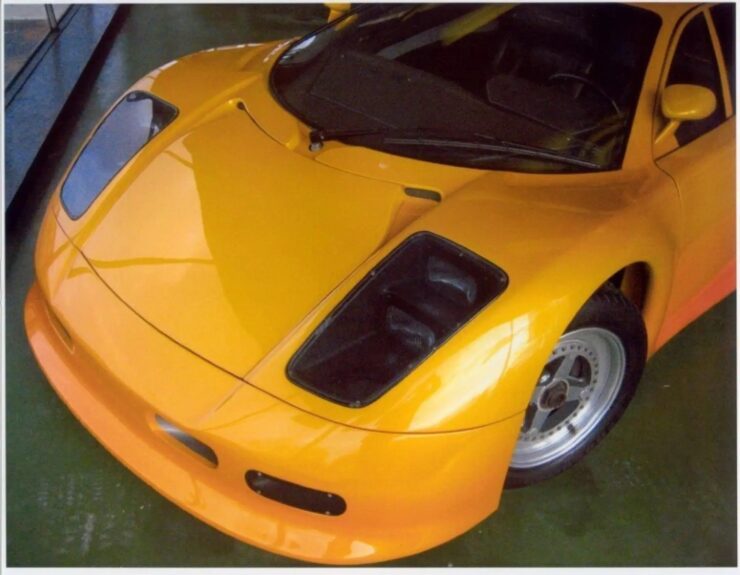
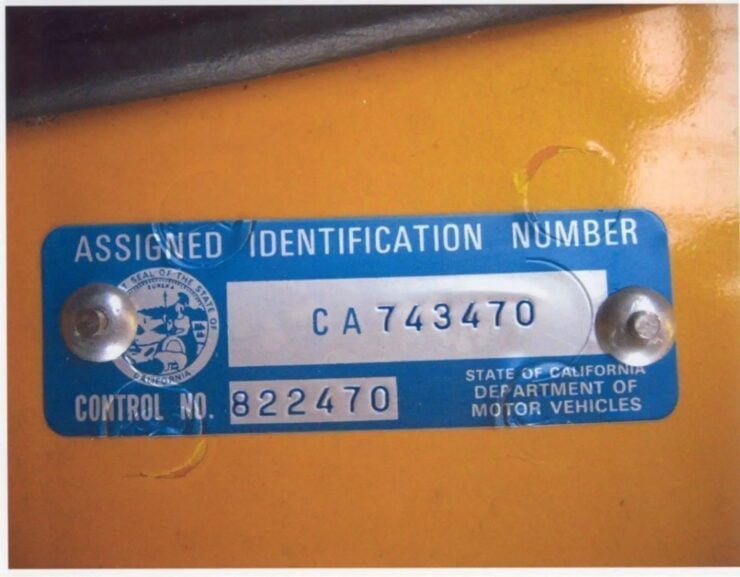
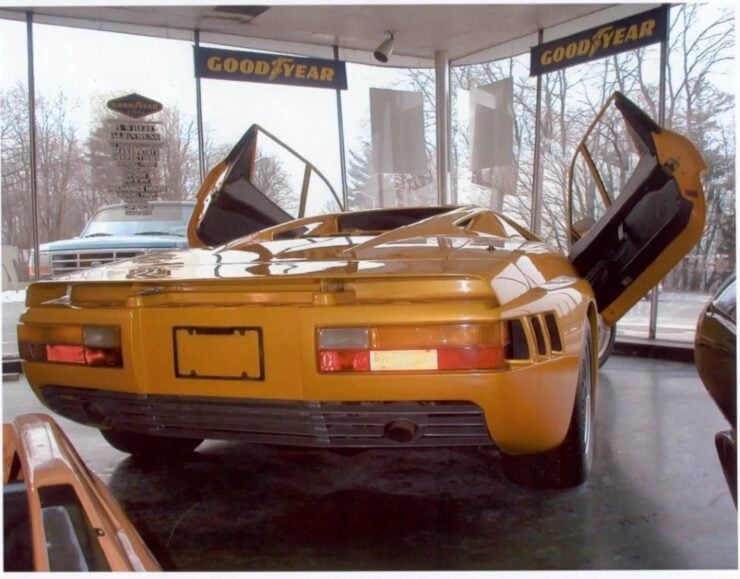

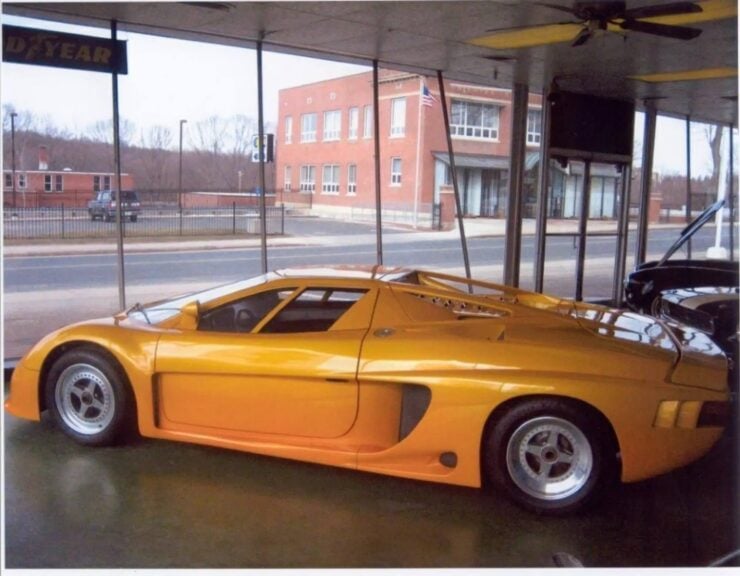
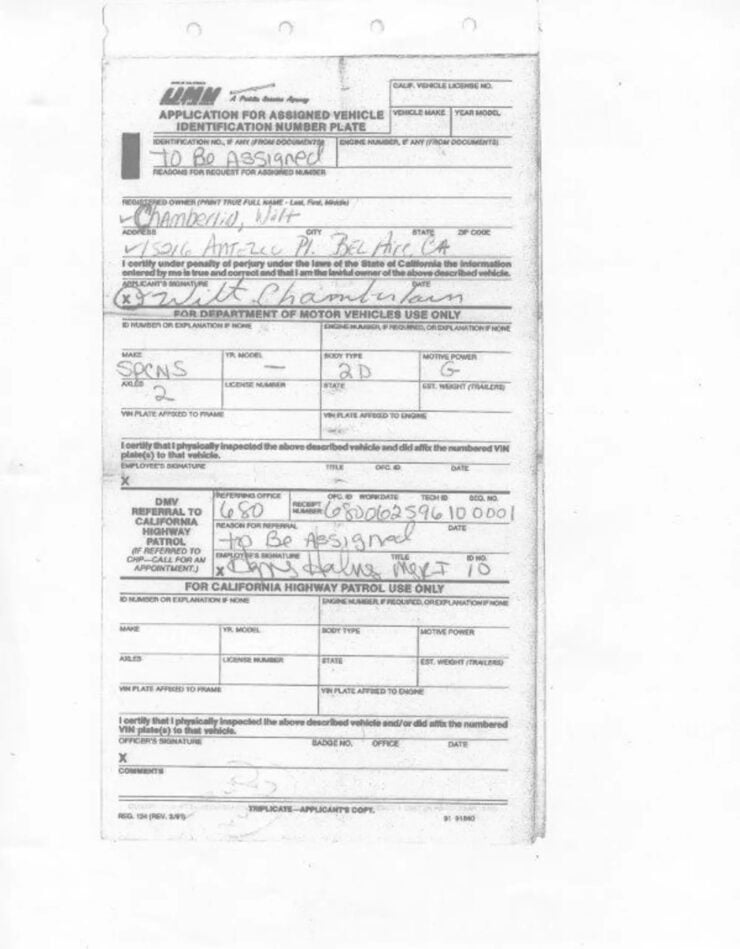
Images courtesy of Julien’s

